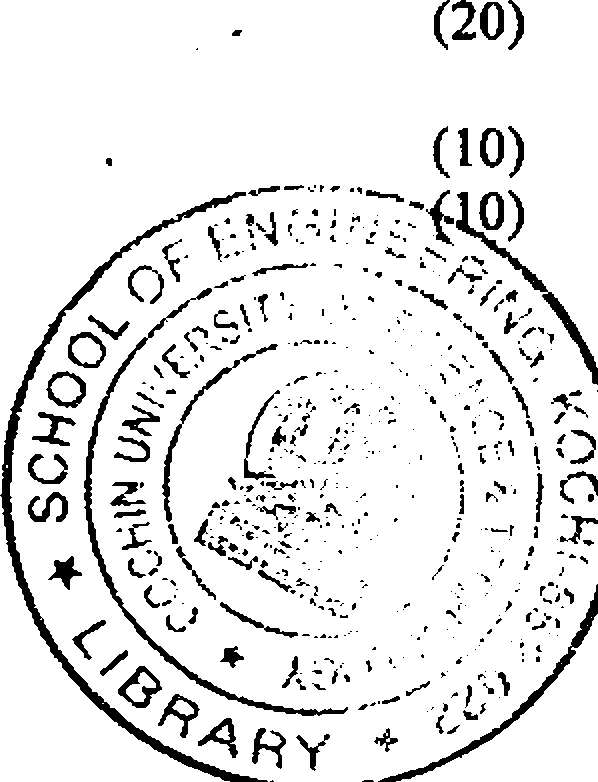Cochin University of Science and Techology (CUST) 2006 B.Tech Fire and Safety Engineering Safety in Rail & Road Transport - Question Paper
BTS(C) - VII - 06 - 044 (D)
*V
\
B.Tech. Degree VII Semester Examination, November 2006
SE 701 SAFETY IN RAIL AND ROAD TRANSPORT
(2002 Admissions onwards)
Time: 3 Hours Maximum Marks: 100
a)
b)
What is permanent way? What are its components? What are the requirements of an ideal permanent way?
What is creep? What are the possible causes of creep? Explain the various preventive and remedial measures that can be taken.
OR
Write short notes on anv four:
(i) Coning of wheels and tilting of rails
(ii) Functions and requirements of ballast
(iii) Any two important fastenings used in railway track
(iv) Sleeper density
(v) Different types of rail sections used in railway tracks
(10)
(10)
II
(4x5 = 20) (10) (10)
III a) b)
Discuss all the types of gradients giving their permissible values adopted on Indian Railways. Also explain the necessity of grade compensation at curves.
A 5 curve diverges from a 3 main curve in reverse direction in the layout of a B.G. yard. If the speed on the branch line is restricted to 35 kmph, determine the restricted speed on the main line.
OR
How do you define the super elevation? What are the objects of providing super
elevation on curves of a railway track? What is cast deficiency? (10)
Determine the length of transition curve and draw the offsets at every 15m. Given
that the design speed of the train on curve is 90 kmph on BG track. (10)
Draw the sketch of a left hand turn out of a railway track and label the important parts. (10) Explain in detail the control of train movement by centralized traffic control system. (10)
OR
Write notes on anv four.
(i) Automatic block system (ii)
(iii) Track circuiting (iv)
(v) Co-acting and Calling-on signals (4 x 5 * 20)
IV
a)
b)
J
a)
b)
VI
Marshalling yards Crossings
VII
a)
b)
Which are the requirements of an ideal highway alignment? What are the factors controlling an ideal alignment?
Calculate the stopping sight distance on a highway at a descending gradient of 2% for a design speed of 80kmph. Assume other data as per IRC recommendation.
OR
Write notes on anv four:
(i) Overtaking sight distance and overtaking zones
(ii) Super elevation on roads
(iii) Transition curves
(iv) Speed restriction in urban roads
(v) Classification of highways
(10)
(10)
VIII
(4x5 = 20)
IX
X
Discuss the various traffic studies and their importance.
OR
What are the various types of traffic islands used? Explain the uses of each What are the advantages and disadvantages of traffic signals?

a)
b)
|
Attachment: |
| Earning: Approval pending. |
